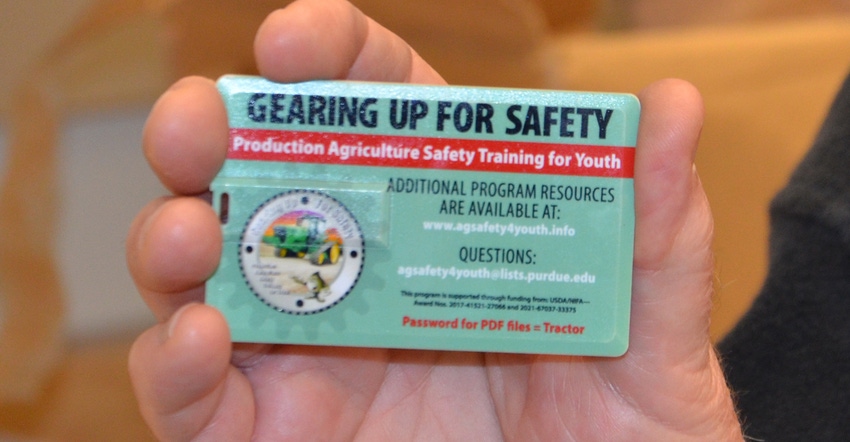May 16, 2022

Do your kids know how to stay safe on the farm? Has your family talked openly about safety? Would easy-to-use lessons for their age level help?
I take farm safety seriously. However, that doesn’t mean I always do things the right way — I am human! The first objective is making sure whoever lives or works on the farm is knowledgeable about how things should be done. One of the best ways to teach kids that safety is important is by having a conversation with them. If they’re very young, start with a farm safety coloring book. Or maybe run them through simple safety tips before they get on the tractor for the first time, or before they get on the tractor for the 100th time.
Say what? By then they’re experts, right? How many times have you heard someone say, “I had done that same thing a hundred times without a problem.”
Experience can be a great teacher, but only if you and your kids are still around to talk about it.
Help on training
Roger Tormoehlen and Bill Field, Purdue University professors in ag and biological engineering, have assembled a wealth of information related to safety for all kinds of activities around the farm and rural setting. They packaged the information under the theme “Gearing Up for Safety: Production Agriculture Training for Youth.”
“We prepared 15 high-quality PowerPoint presentations on ag safety topics, put together a farm safety inspection form, added in over 30 student-focused activity sheets and much more,” Tormoehlen explains. “It’s packaged on a USB drive attached to a credit-card-sized card. We’re sending them to county Extension offices and vo-ag departments all over the country.”
Cost for the program is offset by USDA, partially through COVID-19 relief funding.
“These lessons are easy to use, and we hope educators utilize them with youth,” Tormoehlen says. “We also hope parents teach their kids.”
You can find the same material at agsafety4youth.info. Here are just a few key points from the lesson about tractor safety. These are good reminders for adults, too.
Tractor overturns. Gravity, centrifugal force, rear-axle torque, force on the drawbar and force on high hitch points are all concepts that contribute to tractor overturns. If someone turns over a tractor and dies on your farm, that event will live with you and become associated with the farm forever.
Center of gravity. The center of gravity on a tractor shifts higher if you don’t have front weights on it, or if it has a loader — especially if the loader carries a big round bale out front. The higher the center of gravity, the greater the possibility that the tractor could tip and turn over.
Reducing chance of an overturn. Wide front ends, adjustable rear wheel width with the width set wider, rear wheel weights, and duals or wider tires reduce the odds for an overturn. However, “reducing” is not eliminating the risk. Farmers have died on wide front end tractors when the tractor flipped on a slope. That’s where rollover protective structures increase odds for survival in an overturn.
Keeping overturn risk low. Other factors that help reduce the risk of turning over include slowing down while driving across a slope, only hitching to the drawbar and never the axle, and locking brakes together on the road.
Comments? Email [email protected].
You May Also Like




